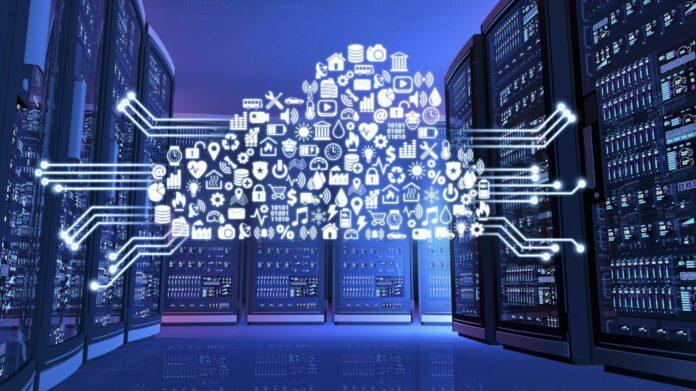Inteligencia Artificial
Los responsables de tecnología con altos requerimientos de disponiblidad en recursos de computación se están basando en el uso de la nube compartida como su estrategia principal. Esto supone el reparto de las cargas de trabajo en proveedores externos especialiados con el nuevo modelo de gestión asociado.
Compartir recursos de cloud (nube) permite además desplazar activos tecnológicos fuera de las propias instalaciones, sin tener que comprometerse con una nube totalmente pública. Estas tendencias además impulsan la incorporación de empleados en remoto y el uso de las últimas tendencias de desarrollo.
Con esos factores , hay una serie de cuestiones que los responsables de tecnología deben tener en cuenta.
- La nube híbrida. Existe una intensa demanda de productos y servicios de centros de datos y nube híbrida. La pandemia de COVID-19 y el trabajo remoto han acelerado la transformación digital, la resiliencia y las estrategias de vanguardia para empresas y proveedores de servicios. Ademas permite a las organizaciones buscan eficientar el tamaño de sus activos. Esa tendencia prevalecerá en tanto crecen industrias muy afectadas como por ejemplo la venta a domicilio, aumento de los medios digitales, la atención médica y la educación.
- Interés en el teletrabajo. La pandemia de COVID-19, con las restricciones de viaje y cuarentenas, significa que las empresas han tenido que aumentar el soporte por vías remotas, produciendo en la mayor parte de los casos la apertura a unas nuevas oportunidades para las organizaciones (obviar la ubicación, mayor y mejor oferta de profesionales, cercanía con las últimas tendencias, flexibilidad de horarios de servicio,…) y los empleados (flexibilidad, conciliación, ofertas laborales remotas, entre otras).
- Seguridad remota. Al inicio de la pandemia de COVID-19, una de las primeras cuestiones fue implantar nuevos enfoques de seguridad asociados al trabajo remoto como por ejemplo las VPN. Nuevos modelos de seguridad y control están apareciendo en las organizaciones para el manejo de este nuevo escenario. Por ejemplo, existen nuevos medios para filtrar el tráfico a través de una ubicación centralizada. El tráfico se encauza a través de una VPN o enrutamiento IP específico, que, equipado con firewalls centralizados, puede controlar el acceso a sitios web y aplicaciones basadas en la nube.
- Evolución de la informática de borde
Las instalaciones de Colo deberán sopesar los efectos de la informática de punta en los casos de uso de coubicación, la tecnología y la estrategia de inversión.
En 2021, se seguirá definiendo la informática de punta y su impacto. Veremos cómo los diferentes tipos de cargas de trabajo podrán aprovechar la informática de punta.
Y, el nuevo año revelará cómo el desarrollo continuo de 5G ayudará a impulsar la computación de borde más adelante.
En ese contexto, los proveedores de coubicación están invirtiendo en centros de datos periféricos, en busca de mercados donde los proveedores de nube a hiperescala suelen estar ausentes.
Muchos proveedores de colocación se dirigen a los mercados de vanguardia y hacen una gran cantidad de la inversión necesaria para estar allí, ya que la tendencia se vuelve más hacia el consumo masivo de datos bajo 5G. Las ciudades de nivel 2, como Pittsburgh y St Louis, están experimentando más actividad como resultado de esta tendencia.
Los centros de datos de borde más pequeños, ubicados localmente, que colocan el almacenamiento y la informática mucho más cerca del usuario final, reducen drásticamente la latencia para IoT y otras tecnologías de vanguardia. La necesidad de tecnología de punta solo será mayor a medida que avancemos en la era inteligente en la que nuestros dispositivos diarios estarán conectados y generando datos.
- Centros de datos renovados. Los nuevos centros de datos son muy diferentes a las instalaciones tradicionales. Los despliegues masivos de centros de datos están dando paso a despliegues más pequeños con funciones especializadas con menor latencia. La infraestructura también está cambiando de forma constante hacia pods (grupo de uno o más containers, con almacenamiento compartido y recursos de red, y una especificación sobre cómo ejecutarlos) y containers (un paquete de software listo para ejecutar). Por ejemplo, ya hay soluciones de proveedores infraestructura física que hacen menos costoso y de menor riesgo implementar este modelo de pods y containers.
- Infraestructura que soporte la Inteligencia Artificial (IA). La computación para la IA y su uso como servicio afecta sensiblemente a los centro de datos. A medida que la inteligencia artificial continúe su expansión, existirá un aumento en la demanda de baja latencia y, por extensión, centros de datos. Los vehículos eléctricos, los asistentes de inteligencia artificial como [Apple] Siri, [Amazon] Alexa y Google Assistant, así como la comunicación constante y los juegos online, por ejemplo, requerirán centros de datos que respalden la baja latencia
- Impacto medioambiental. En una nube híbrida se puede eficientar mejor el uso de energía. Existen innovaciones para minimizar el impacto en el medio ambiente con objetivos medibles de reducción de emisiones de CO2 como mejoras en la refrigeración o un mejor rendimiento de la batería. El responsable de tecnología debe considerar este factor dentro de su modelo de toma de decisiones.
El ritmo de cambio en el centro de datos será continuo, y se espera que se acelere en los próximos años. La intensificación de la demanda de más servicios digitales y el deseo de adoptar nuevas tecnologías al tiempo que se mitigan las incertidumbres y aspectos coyunturales adicionales impulsan el crecimiento.

